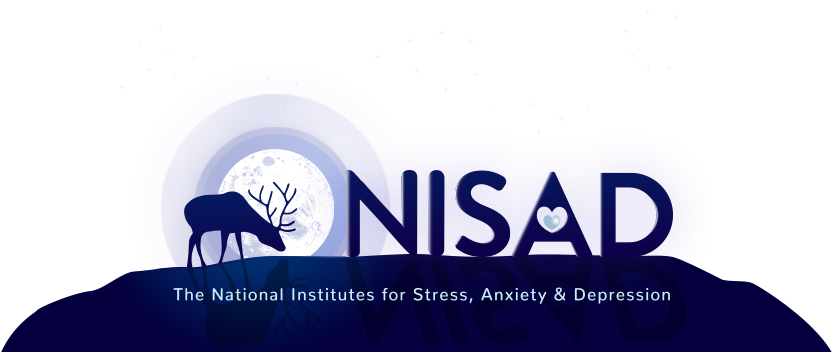“Look into my eyes…” 7 myths dispelled: the truth about hypnosis
Well, truth as much as there is “a truth”, which is really just a construct from the information we have – or perceive to have.
Philosophy aside, our purpose at ELK.Health is to provide us all with the means of being healthier and happier – through changing how we feel and the things that we do – and maintaining these changes.
As we learn how to change our habits and emotional reactions, new neural pathways are created in the brain that support these changes.
With repetition and practice, these new pathways become stronger, the old pathways weaken, and the new ways of being and doing become more natural and habitual.
You might imagine this like a much-visited grassy field with a well-worn path leading through it.

Whenever crossing the field you’ve automatically followed the obvious path. Yet one day, you decide to take another route; indeed to make another path. At first, it’s a bit of a struggle getting through the thick, tall grass. Yet, each day you return and wend your way through, the path becomes clearer and easier to follow. Over time, the old path gradually becomes overgrown and it becomes more instinctive to take the new path.
In developing these new neural pathways, we ‘ELK.Healthers’ employ various tools – in particular, mindfulness and meditation, which are very supportive friends in helping us maintain new pathways. We also use hypnosis.
Now, many people feel a bit uncomfortable at the thought of hypnosis. This is largely because of what’s portrayed on TV, film and entertainment. And it can be quite thrilling to think of hypnosis as something mystical or even sinister. But let’s now break this spell – because knowing the truth about hypnosis can provide us with additional means to change how we feel and the things that we do.
So here are 7 myths about hypnosis dispelled:
1. It’s a weird, freaky, altered state
Hypnosis is the means of inducing trance. It might take the form of words, visual cues, sounds or other things that send us into a trance.
Trance is a perfectly natural state that we all go in and out of throughout the day; it’s a normal part of brain activity that typically has the following characteristics:
- Our attention narrows, focusses or fixates onto something in particular and we become less aware of other things around us.
- We might carry out actions automatically or without consciously thinking about what we’re doing.
Here are some examples of everyday trance states at play:
- Your child being so engrossed in watching a film or cartoon that they don’t seem to hear you even when you ask them something several times.
- Driving somewhere and reaching your destination without quite remembering the journey.
- Listening to a speaker or presenter and suddenly realising that your thoughts had drifted off to what you might cook for dinner, or being so fascinated in what they’re saying that you didn’t notice the person next to you spill their coffee.
- Making yourself a cup of tea only to find you’d already made one.
There are different depths of trance, and some people have the ability to go into very deep trance states (we’ll talk more about this below) but trance is something that our brains do every day, quite naturally.
2. Not everyone can be hypnotised – it won’t work on me
When we think of hypnotism, we probably conjure up the idea of somnambulists: people who have the ability to go into a deep level of trance, and who are particularly responsive to suggestions.
It’s true that relatively few of us fit into this category (although some lucky readers will indeed have this capacity). Most of us can be hypnotised to some extent, with a small proportion of us being unsusceptible to hypnosis.
Studies suggest that the more easily we’re able to become absorbed in things (such as listening to music or reading) the more ‘hypnotisable’ we are.
This understanding comes from studies into hypnosis, such as the Stanford Hypnotic Susceptibility Scale (the first reliable measure of hypnotic susceptibility), which test for very specific trance phenomena; one example being receptiveness to the suggestion of an unconscious arm movement. The findings – from research carried out under laboratory conditions with specific criteria – suggest that most people have the ability to access different levels of trance.
Yet even for the unsusceptible ones, it has been argued that the nature of the test conditions may influence their (un)receptiveness to being hypnotised into following specific instructions.
And the tests don’t measure receptiveness to desirable and subtler or indirect suggestions, which are more likely to be accepted by the unconscious mind. Indeed, specific phenomena such as arm levitation aside, the depth of trance isn’t important when it comes to absorbing other, less direct, kinds of suggestions – as TV advertisers well know!
If we consider that trance is a brain state that we all go into naturally throughout our day, we can let go of the idea of ‘being hypnotised’ and instead see hypnosis as a way of utilising the trance states that naturally occur as a way of taking on new ideas and understandings.
3. It has the power to make me do embarrassing things

Trance may often be induced by suggestions of drowsiness and ‘hypnotised’ people may appear to be in a sleep state but, conversely, brain activity in hypnosis more closely resembles that of a person who is awake (1).
In fact, during hypnosis, we are often alert and problem-solving. We may lose awareness of our surroundings because our attention is focussed inwards and we are active in the process of what we’re doing.
Hypnosis cannot make us do things that we don’t want to do. Rest assured, we will only do embarrassing things if we want to – one of the reasons that stage hypnotists will select participants who are more likely to go along with the fun.
4. I might say things I don’t want to say out loud
During hypnosis, we remain in control of the things we do – even with an involuntary arm levitation, this wouldn’t happen if we didn’t want it to.
We also stay in control of the things we say. If we go into deeper levels of trance, we may speak more slowly or find it more difficult to get the words out, but we’re still active in what we’re doing and can choose what we say or don’t say.
5. It’s a form of mind control
One of the benefits of hypnosis is our receptiveness to suggestions that will enable us to make changes to how we feel and to the things we do in our everyday lives.
Very often the emotional and behavioural problems we experience exist because of a dichotomy within us: one part of our mind wants one thing; the other part wants something else.
Hypnosis can help us to resolve this dichotomy. Importantly, the solutions lie within ourselves and we will only accept suggestions that fit with our morals, ethics and understandings of the world.
Belief changes are possible – and are often instrumental in the process of changing our feelings and habits – but they will be brought about and accepted through our own realisations and understandings, not imposed upon us by someone else.
Under hypnosis, we are not submissive; we become active problem-solvers in directing our own minds.
6. I won’t be able to come out of it
Trance is a natural state that cannot go on indefinitely. Even if a hypnosis session didn’t guide us out of the trance, we would naturally come out of it at some point.
In certain situations, we might fall asleep, but would then wake up as usual as after a nap or night’s sleep (depending on when and where we fell asleep).
It’s also possible for us to terminate hypnosis at any time by bringing ourselves out of it.
7. The practitioner has special powers
Hypnosis isn’t something that’s done to us; in hypnosis, we become active participants in the process. The practitioner is actually guiding us into self-hypnosis where we can explore ways to solve our problems.
Our minds have the capacity to take the suggestions and apply them in ways that are unique and beneficial to ourselves. Although even sceptics have been shown to be receptive to suggestion (when it’s aligned with what they want to happen), approaching hypnosis with a positive expectancy can enable us to take the driving seat in shaping our perceptions and making the changes we want to make.
Most of the myths surrounding hypnosis are to do with a fear of losing control or of being under someone else’s spell.
When we realise that we are active participants in hypnosis, it becomes clear that rather than our losing control, hypnosis provides a means for us to gain control over how we feel and what we do.
The emotional and behavioural difficulties we experience in our everyday lives tend themselves to be done in light states of trance. So we can even look at hypnosis as being a way of de-hypnotising ourselves from an unhelpful trance and hypnotising ourselves into a healthier and happier trance.
At ELK.Health, we are passionate about helping people resolve the internal dichotomies that are harmful to their health and happiness. We research and develop innovative ways for people to solve the problems that are bothering them in a way that feels right to them.
Follow us for more news about our work.
1John F. Kihlstrom, in Reference Module in Neuroscience and Biobehavioral Psychology, 2018.
Additional source: Monsters and Magical Sticks, Steven Heller

Alison Easton
BA(Hons) HPD DipCHyp
Alison is NISAD’s Director of Clinical and Creative Development.
She will draw on her long experience as a clinician to provide support in our new ELK.Health online clinics (ELK.Health is NISAD’s behaviour change programmes wing) and is a substantial, and much valued, contributor to the creation and development of ELK.Health’s #CertainAboutUncertainty, CalmBaby, NoWeigh and Type2.Club programmes.

